Panama Canal and Costa Rica Rain Forest
After Cartagena, Columbia, our “floating RV” (the Coral Princess) took us across to the Panama Canal. For us, this was the crown jewel of the five ports of call on the cruise. The Canal has a long and fascinating history, and is of course a critical pathway in modern-day shipping.
First, some background — the Canal is actually a complex 50-mile waterway consisting of three locks and two lakes. Due to a twist in the land, the Canal actually routes North/South, not East/West, with the Atlantic Ocean (specifically the Caribbean Sea) on the northern entry. To go from the Atlantic to the Pacific, the process goes like this:
- Go through the three chambers of the Gatun Locks
- Proceed across Gatun Lake
- Go through the single chamber at the Pedro Miguel Locks
- Proceed across Miraflores Lake
- Go through the two chambers at the Miraflores Locks
- Sail under the Bridge of the Americas, past Panama City, and into the Pacific Ocean
HOWEVER – for our cruise, the ship would not be going all the way to the Pacific. Instead, the Coral Princess would traverse the Gatun Locks southbound, drop touring passengers off in Gatun Lake, and then reverse course back through the locks and wait at Colon for returning passengers. The only way we could see the entire Canal system would be to take the tour which continued the passage to the Pacific side – so that’s what we did.
We awoke early that morning (for us) to watch the pre-dawn approach to the Gatun Locks. The ship’s bridge camera was being shown on the big movie screen on deck 14, as we motored across the entry bay. Off the port side, the sleepy cargo docks were waking up along with us.
A few other early risers gathered with us up on deck 16. The blue-glass wind-protection windows made it hard to get proper photos, so it was a bit of a scramble throughout the passage. The Coral Princess isn’t set up very well for off-the-bow photography.
The first chamber of the Gatun Locks appeared in the haze off the bow. One of our tugs is leading us toward the locks.
We passed by the future vehicle-crossing causeway. It’s amazing, but after more than 100 years of operation, it’s still pretty troublesome to get across the canal in a car or truck. This will fix that problem.
We pulled up to our assigned chamber (eastern channel), alongside the cargo ship Mozart. They keep the ships flowing, nose-to-tail, but even so the Canal only processes 37 ships per day. For world-wide shipping, that’s quite a bottleneck. It can take up to 8-10 days waiting to get a clearance – that’s why the new parallel locks are being built.
As we slid ever-so-carefully into the first chamber, it was clear that we were on a “panamax” class boat. The Locks are 1000 feet long and 110 feet wide. The Coral Princess is 987 x 106. Not even room to breathe as our diesel-locomotive tugs came up to tow us through.
We waited, patiently fascinated, playing hop-scotch with the Mozart as we inched through the locks. Creep in, stop, gates closed. Fill the lock – 26 million gallons in 10 minutes. Open the gates ahead, creep forward. Repeat. Each chamber raises the ship about 28 feet. Three chambers take us up to the level of Gatun Lake at 85 feet above sea level.
As the first gates closed behind us, a land vehicle bridge was created and the pent-up traffic streamed across. The future causeway will relieve this substantially.
After an hour or so, we emerged into Gatun Lake. We passed near a big dredger, used for keeping the shipping channels clear for big boys like us.
At this point, we left the Coral Princess, which turned around and went right back through the Gatun Locks. She would then wait for us at Colon after our long touring day ended. To navigate the rest of the system, we rode a bus across the isthmus to a spot above the next set of locks. There, we took a much smaller boat with a big open-air top deck for easy viewing. This was much better for photography, and we proceeded into the rest of the Canal passage. (The bus ride was SO long, almost two hours, that we wondered why we just hadn’t taken a boat across Gatun Lake. Oh well, we got to see a lot of the isthmus that way.)
Pulling up to the Pedro Miguel Locks, we saw that our small boat was going to share the chambers with some other vessels. Our companions were two modest sailboats of less than 100-foot length, and a medium-size cargo ship that had to nose right up to us to fit in the locks with us. Quite a variety. Once gated in, we all rose up and down equally of course.
Here’s a sequence of the water lowering and the gates opening at the Pedro Miguel Locks.
Then across Miraflores Lake and “racing” our old buddy Mozart through the last set of locks – – –
As the day waned, we traveled out through the passage beneath the Bridge of the Americas. Believe it or not, at 201 feet of clearance, there are many ships that cannot use the Panama Canal, not because of the Canal itself, but because they can’t clear under this Bridge. Amazing.
For EVERY boat, large or small, a Canal Pilot must accompany passage through the locks. Once clear, a pilot boat comes up and the pilot leaves for his next “customer”. Our pilot waved a cheerful goodbye as we sailed toward our dock.
It was nearly dark when we finished our bus ride back to Colon. Traffic had been poor, and the ship was practically straining at its dock lines, eager to leave. Next stop, Costa Rica.
We had a lot of choices for shore excursions at Costa Rica, including tours focusing on human history, traditions, city life, etc. But our passion is always for the wild places, and we opted for a rain forest tour – including an aerial tramway. We had often seen wildlife documentaries with intrepid film-makers clawing their way up steel cables into the forest canopies. We never really thought we’d have a chance to try it ourselves, so it was an easy decision.
The day started pretty inauspiciously with yet another long bus ride. The rides aren’t boring, but the guides are usually difficult to understand (accent), and the buses don’t stop for photos. All I could snapshot were some fleeting glimpses through the dusty, dirty windows as we zipped past the varied scenery.
We passed seemingly endless banana and pineapple plantations, and I couldn’t help but think about all the rain forests we were NOT seeing (having been mown down for crops).
To keep us occupied, the guide narrated the scenery, and showed us a banana blossom, with its pale yellow petals – each of which develops into the familiar fruit.
We arrived at our destination, the private reserve near Jaco. A company (rainforestadventure.com) specializes in a sort of lightweight eco-tourism. They preserve the forest while making minimal impacts on it, but still allowing newbies like us to get a close-up experience. I was pleasantly surprised by how “natural” (aka wild) the forest was, and how much I enjoyed the visit.
The biggest problem with trying to tell about a rain forest is in conveying is magnitude. Simple 4×6 photos cannot show what it feels like to be surrounded by mountains and seas of green, green, and more green. This area receives 200 inches of rain a year, and anything and everything grows, in profusion. I have about three hundred photos, and maybe if I plastered the walls of a room with prints and sat you down in it, it might give you an idea. GREEN. We got into our tram car and started to enjoy it.
Notice the narrow path through the vegetation? In order to minimize “footprint”, in many areas the company runs the tram cars one-above the other instead of side-by-side. Nothing is cut down that doesn’t actually hit the tram cars, so close encounters with flora are the norm.
Much of the ride, we were surrounded by in-your-face forest. Never was it so clear that thousands of species are to found in this lushness.
Occasionally, there’s a natural clearing, and the size of the forest gets a chance to express itself.
It’s early March, but rain forests blossom all year ‘round.
The vines were simply AMAZING. They grow from the ground up, they grow from the canopy down, and the grow from the middle of the trees in both directions. As they get thicker and heavier, they separate from the trees which supported them, and they hang independently, like Tarzan vines.
But sad to say, the Tarzan vine is a total myth. There is no way that any of these are even going to support a human’s weight, let alone the force of swinging from tree to tree. Furthermore, they just hang pretty much straight down, so there’s no “swing” to be had anyway. Oh well, it was a nice fantasy.
Even from our lofty tram perch, we were still not at the top of the canopy, which towered above us.
When we got done with the tram ride, we walked the floor of the forest for a different perspective. Giant tree-root bundles, termite balls, bromeliads, plants of every description and size. My Mom was loving every minute of it.
After our forest visit, we climbed back on the bus to return to our ship. Passing the “civilized” areas was quite a contrast. The peoples of Costa Rica are clearly not as rich as their forests – houses and buildings are festooned with grilled windows, chain-link fences, and fierce strings and bundles of barbed wire. What a contrast.
We rolled past a surrealistic old cemetery in Limon – – –
– – – snooped through one of the souvenir shops – – –
– – – and joined the boarding lines to the Coral Princess, heading for Grand Cayman.
Still curious? Wikipedia has a great write-up on the Panama Canal — https://en.wikipedia.org/wiki/Panama_Canal. Also at wikipedia is a LOT more information on Costa Rica — https://en.wikipedia.org/wiki/Costa_Rica.
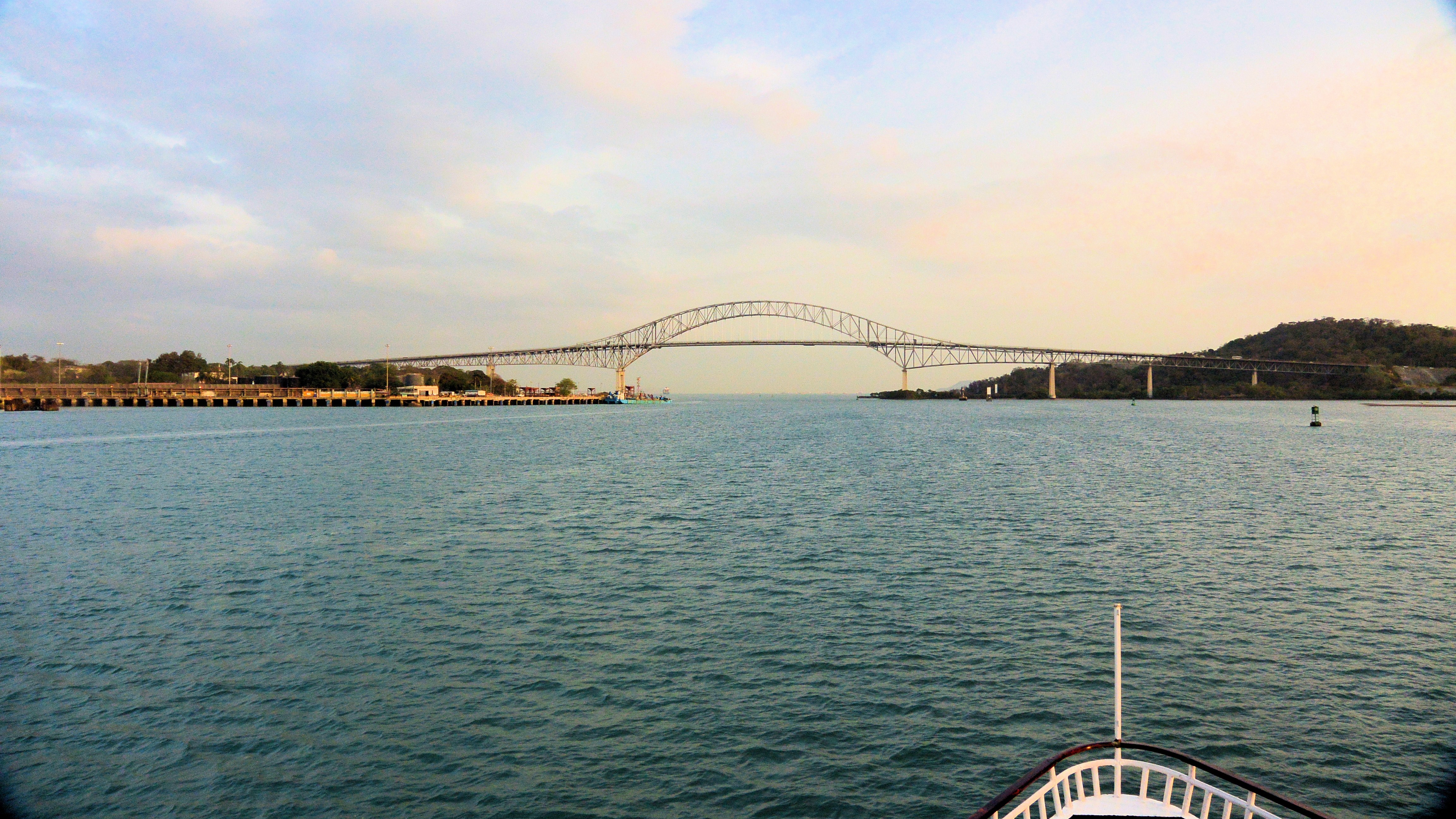
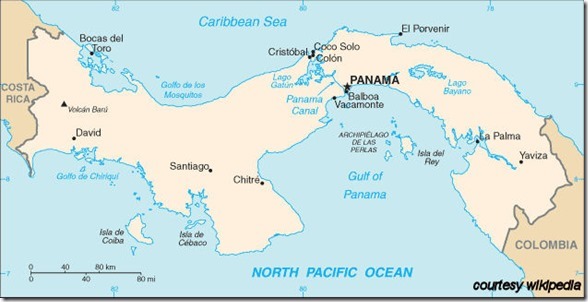
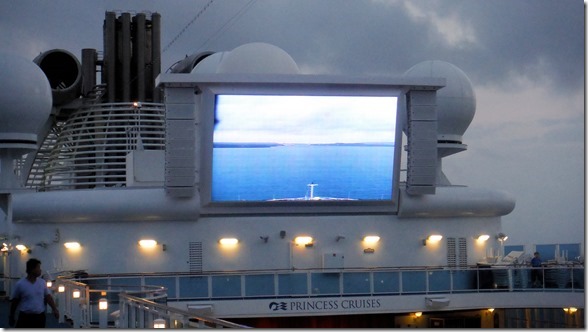
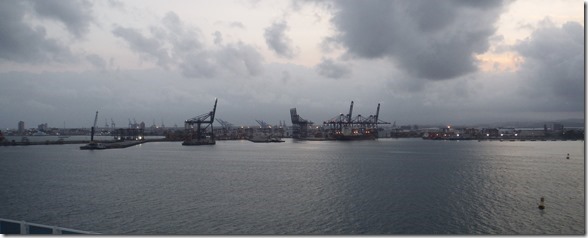
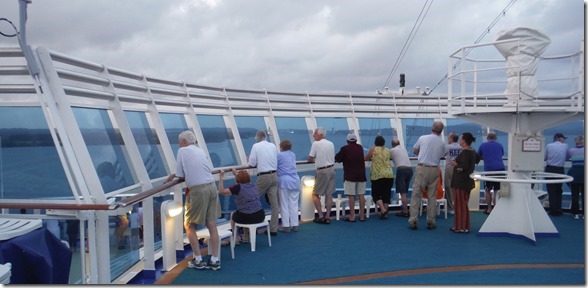
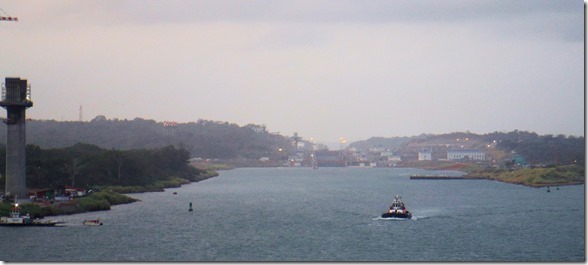
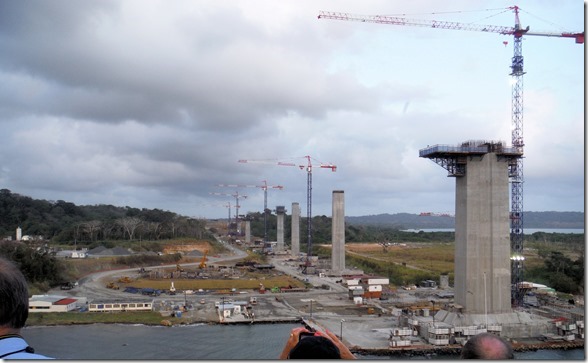
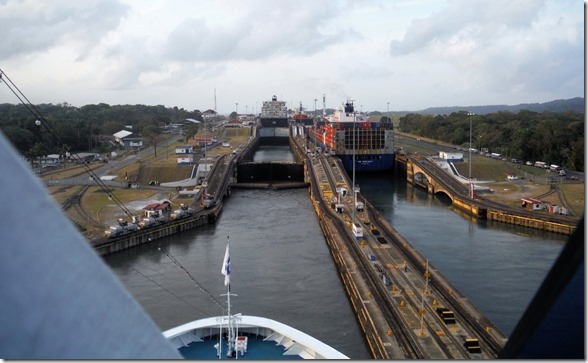
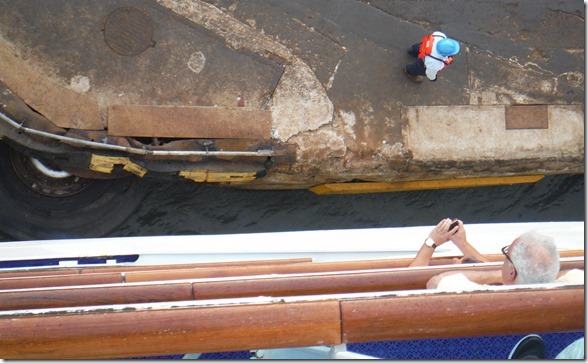
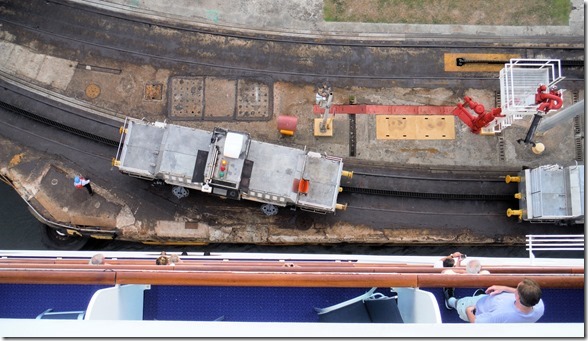
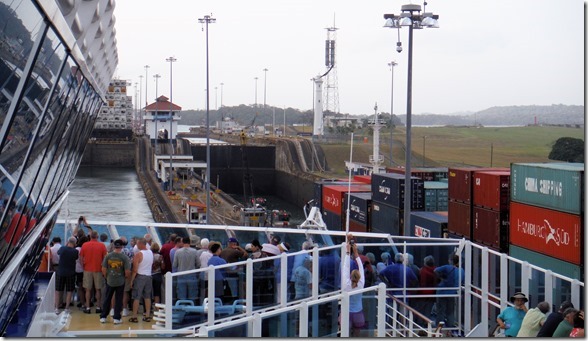
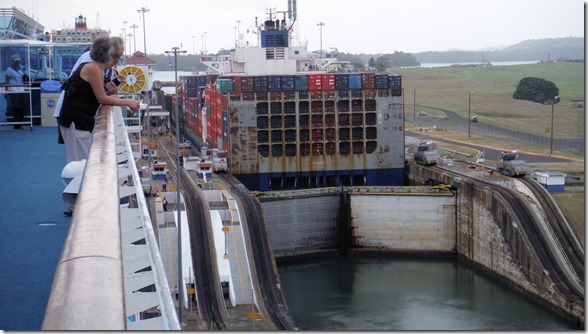
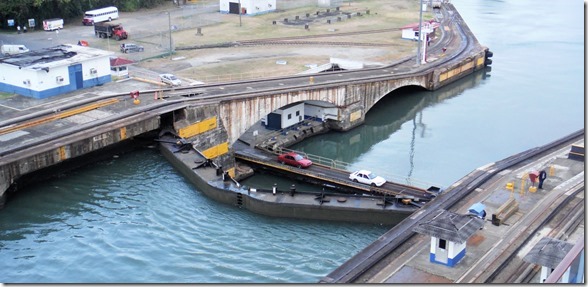
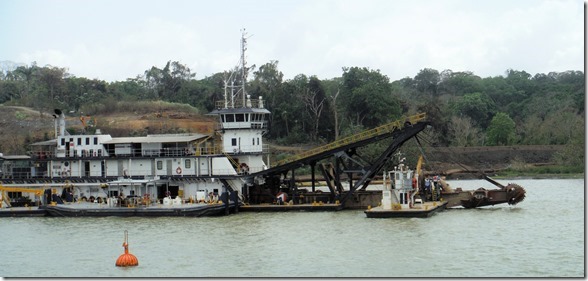
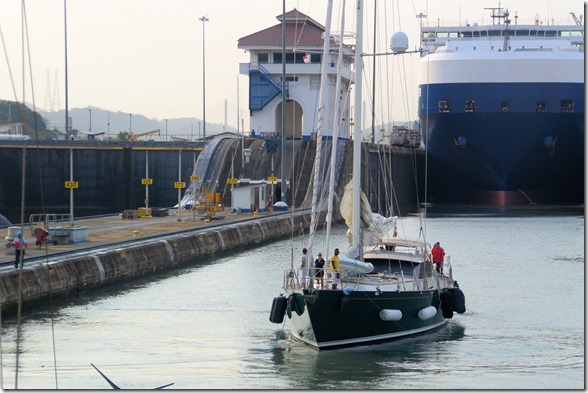
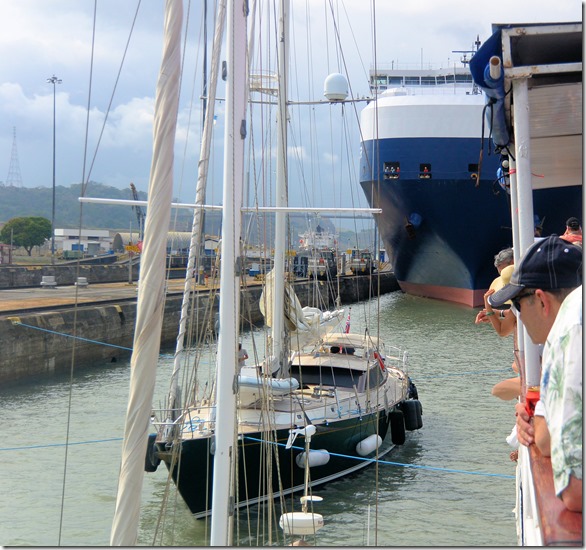
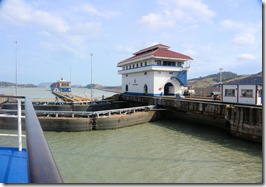
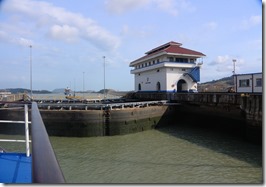
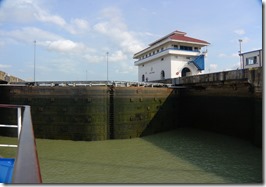
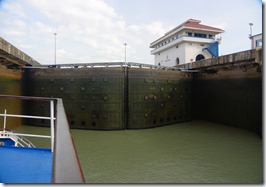
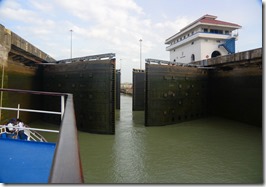
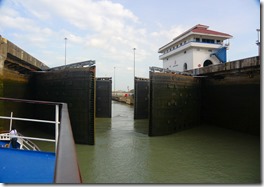
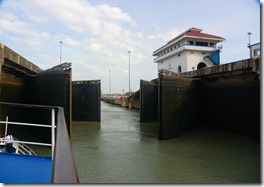
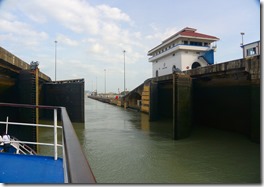
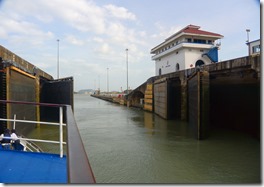
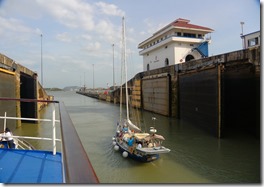
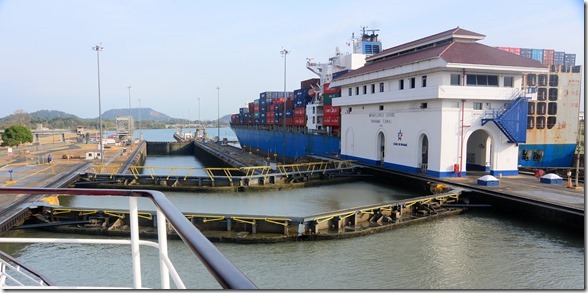
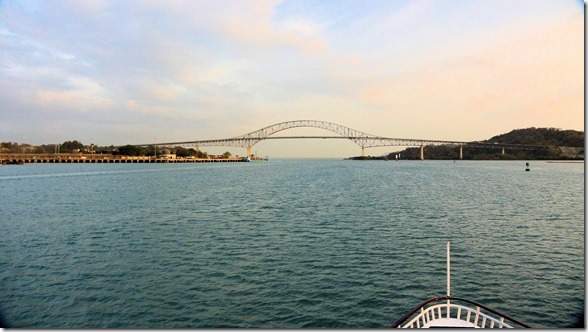
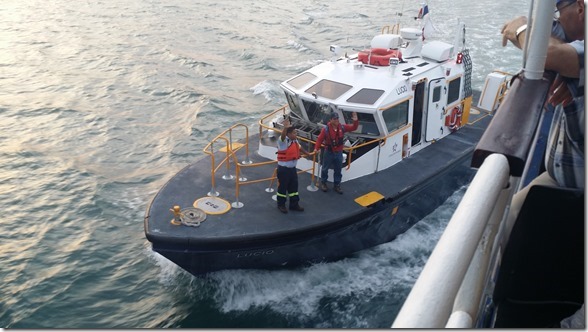
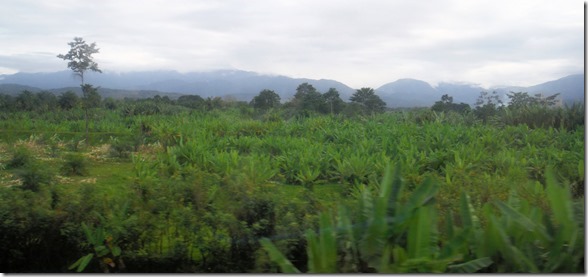
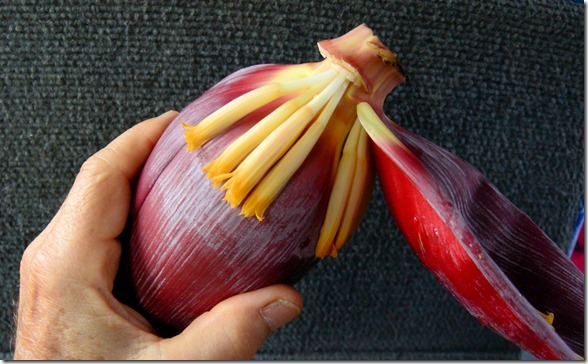
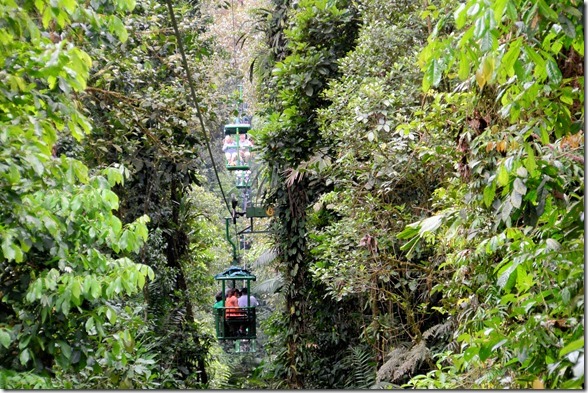
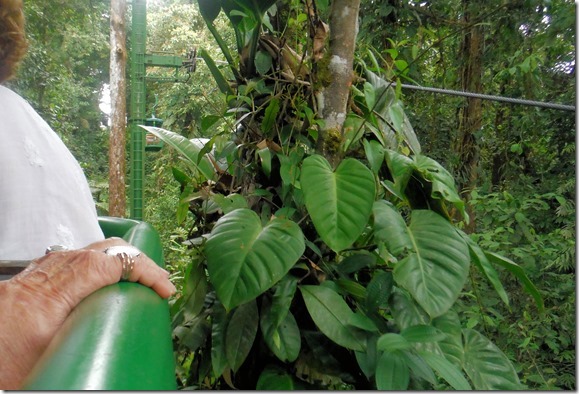
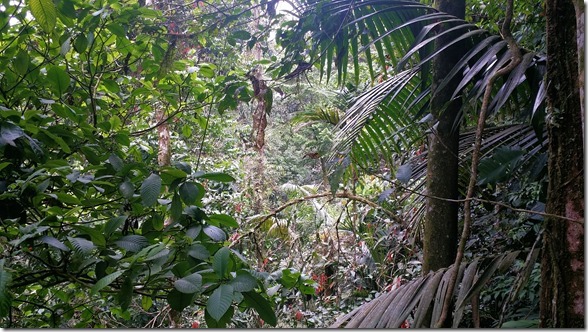
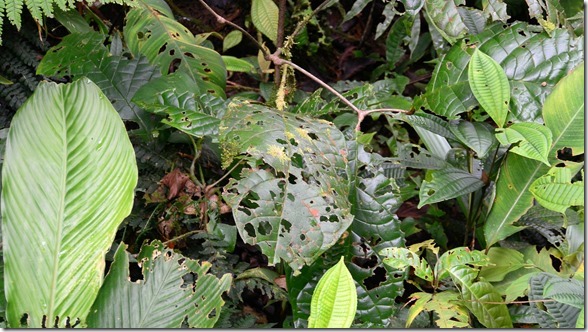
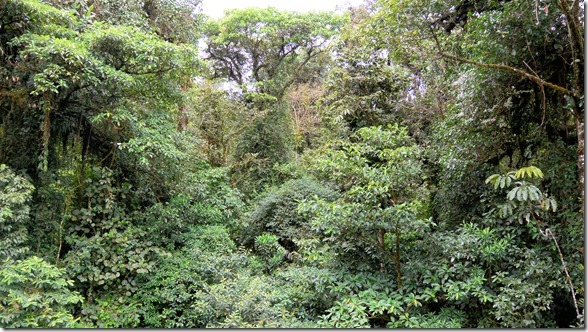
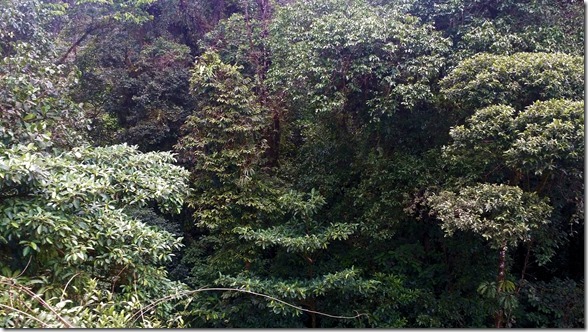
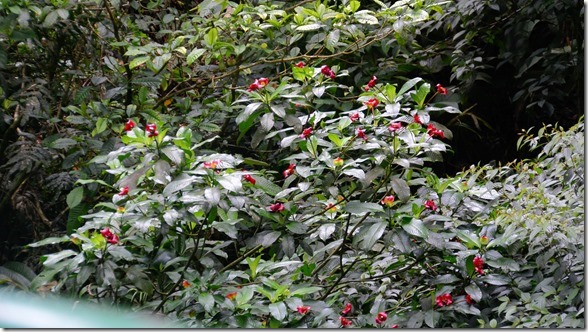
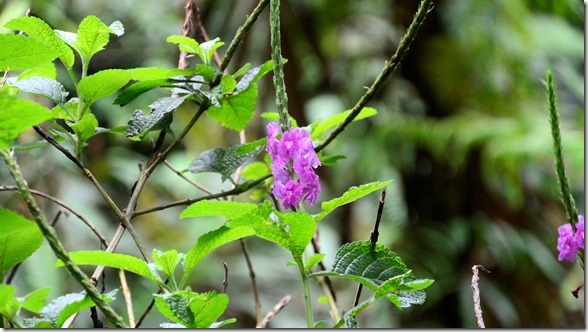
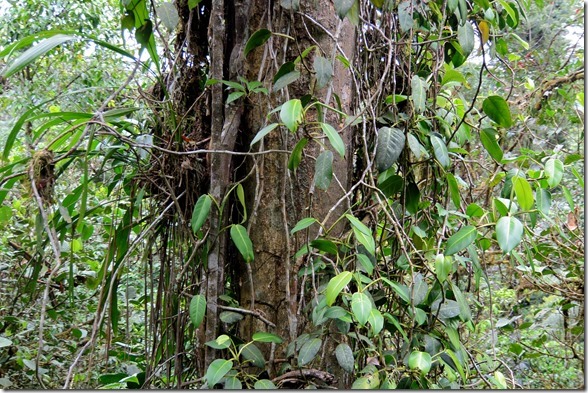
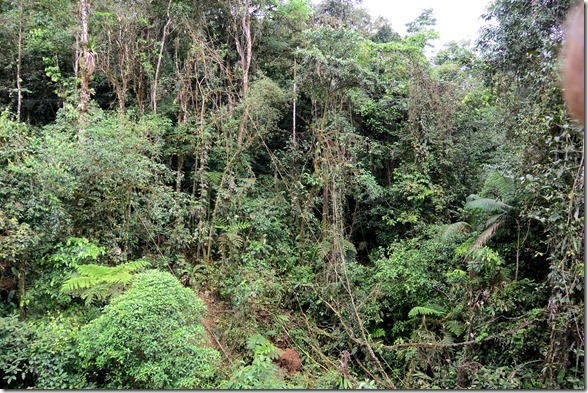
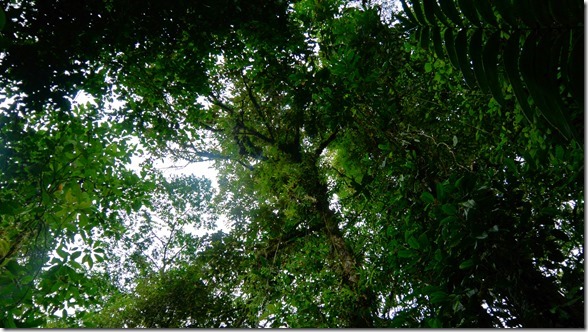
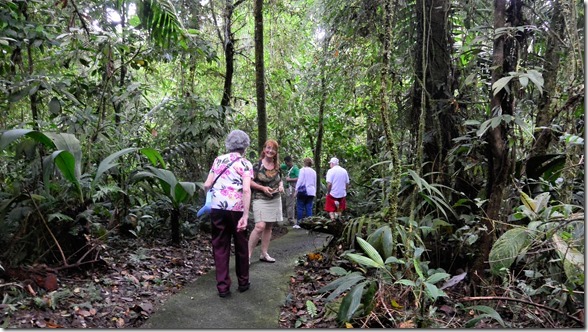
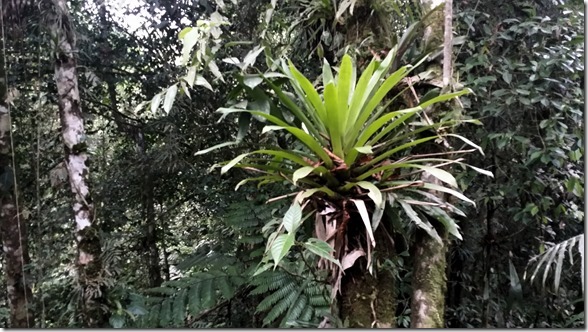
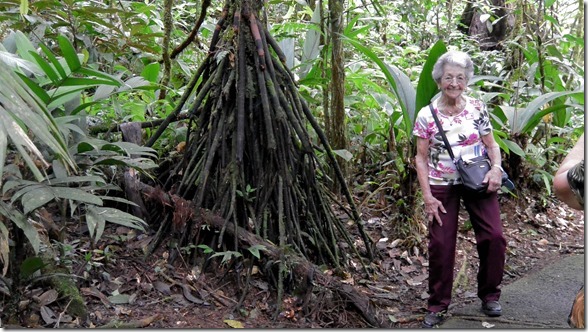
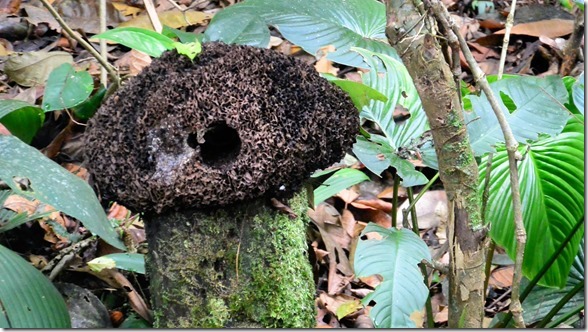
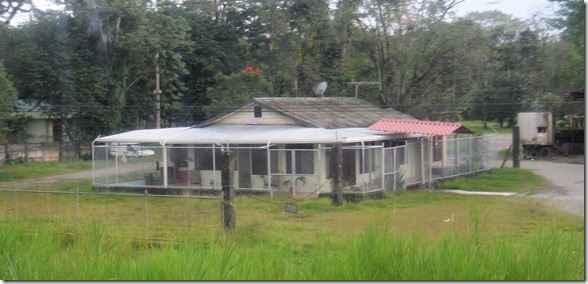
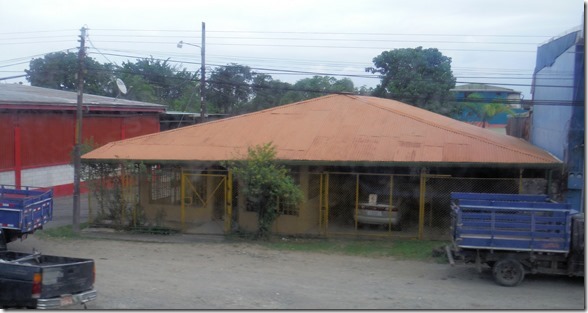
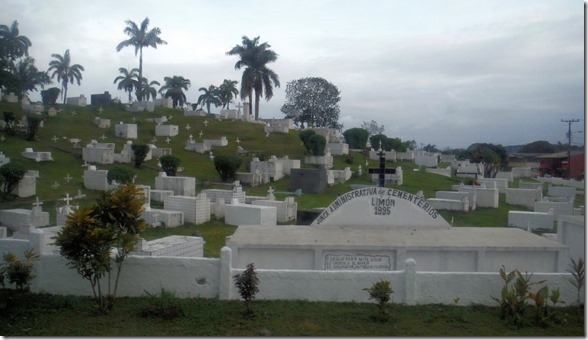
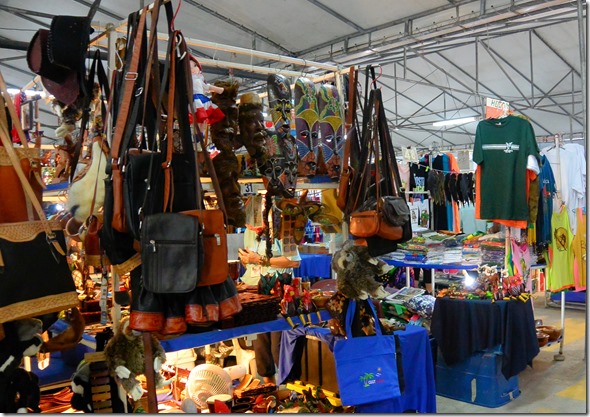
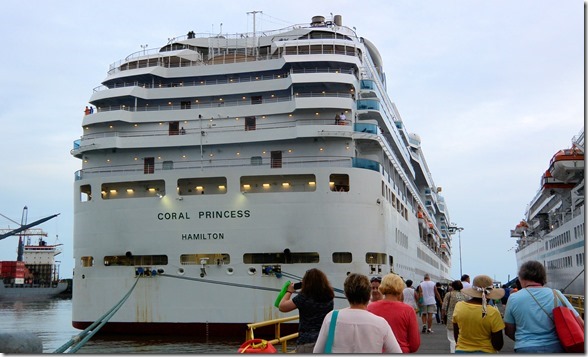
Comments
Panama Canal and Costa Rica Rain Forest — No Comments
HTML tags allowed in your comment: <a href="" title=""> <abbr title=""> <acronym title=""> <b> <blockquote cite=""> <cite> <code> <del datetime=""> <em> <i> <q cite=""> <s> <strike> <strong>